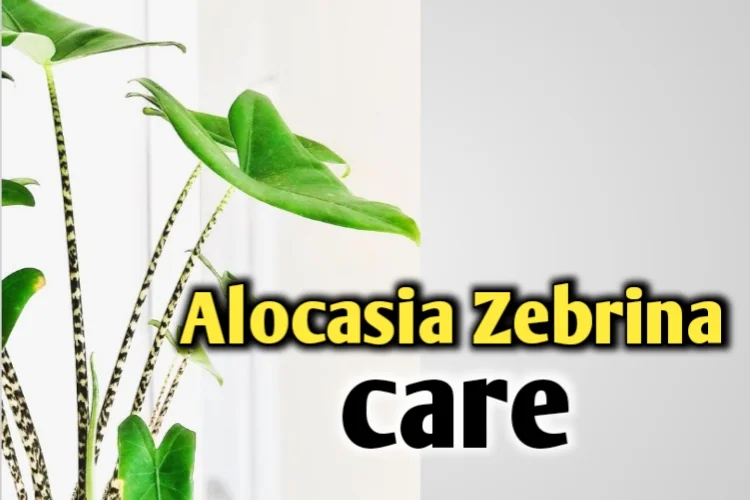Alocasia melo care, propagation, leaves problem [all you need to know]
Alocasia melo is a different type of alocasia species which may fulfill the ornamental demand of your house. But, for this purpose, you will need to get some information for their development.
They need less watering, 75% humidity, 70°F to 80°F temperature and sandy loam soil for their establishment. If you still face problems like brown leaves, crispy curly leaves, sort out the problem of over watering, pest attack and underwatering.
If you don’t observe their physiological change, it may kill your melo plant. So, check these factors from this session.

Overview
| Scientific name | Alocasia melo |
| Other names | Sometimes it is called Alocasia rugosa |
| Family | Araceae |
| Origin | Sabah state, Malaysia |
| Plant height | 23 inches |
| Plant type | The tropical perennial plant generally grows on rocky terrain |
| Leaf | Green and thick leaves which have a rough texture |
| Stem | Tuberous stem |
| Sunlight | Bright and indirect light avoiding too many shades |
| Watering | Once a week |
| Soil | Loose, porous and well-drained soil |
| Humidity | Around 75% |
| Temperature | 60°F to 80°F |
Where to buy alocasia melo?
Alocasia melo is a different species from the other alocasia plants. That’s why you may not find it in your localities. But don’t worry. You can easily order your melo plant from the online if it is not available near you.
Alocasia melo plant care guide
As alocasia grows better on rocky places, it is hardy by nature. Though it can tolerate many adverse conditions, you should provide proper care to this plant. Let’s get the necessary information about their care.
Light required for alocasia melo
The green leaves of the melo plant won’t be able to make food without enough sunlight. They need bright and indirect light for their proper growth and development. But, the burning heat of afternoon sunlight should not touch them as it will destroy the plant mechanism.
How much water is needed for the alocasia melo plant?
Following that, I will instruct you about watering alocasia melo. This plant loves to grow on hard surfaces. That’s why excessive watering will be detrimental for them. Watering once a week is enough for their establishment. It may vary according to the season and weather.
Perfect soil for alocasia melo establishment
If you want to keep your melo plant in a good condition, plant them in loose or sandy soil. Such soil won’t let them stand in water which will fulfill their growing condition. Make sure that the soil is mixed with healthy materials so that it may not face nutrient deficiency.
Temperature and humidity requirement of alocasia melo
Alocasia melo is a tropical plant which prefers to grow in moderately high temperatures. Temperature about 60°F to 80°F is best for their vegetative and reproductive phase.
On the other hand, they also need high humidity along with high temperatures which will be around 70% to grow properly.
The best fertilizer for alocasia melo plant
If you ask me about the best fertilizer for melo plants, I will suggest any kind of liquid fertilizer which consists of enough nitrogen, potassium and phosphorus ratio. Solid fertilizers sometimes affect the root zone directly which may cease the growth. Hence, you can apply liquid fertilizers to the plant diluting in water.
Alocasia melo plant propagation
Propagating alocasia melo plants by stem cutting is one of the easiest ways to multiply them fast. Let’s have a glance at the procedures of propagation.
Step-1: Plant selection
The most crucial part of propagation is plant selection. An unhealthy plant won’t grow a better seedling. So choose a healthy and mature one which is pathogen free.

Step-2: Cutting
After selecting the plant, remove the soil from the root part and divide the stem into a few portions with a pair of scissors or a knife.

Step-3: Planting
Then, plant the cutting in the previously prepared soil mixture and water a little.

Step-4: Aftercare
Provide moderate to bright sunlight chronologically to your plant so that it can adapt to its nature.
How to repot alocasia melo plant
You can complete the repotting of alocasia melo by following a few steps-
- Firstly, prepare a new pot with a soil mixture consisting of perlite, coco coir and sandy soil.
- Then, uproot the plant from the existing pot without disturbing the root.
- Finally, complete the repotting process by planting it in the new pot consciously.
Why are my alocasia melo leaves turning brown?
The main cause of alocasia leaves turning brown is overwatering. A plant like melo which grows on rocky surfaces cannot go well in a water-logged condition. So, if they face such a situation, the leaves start to become brown.
Why is my alocasia melo curling?
Alocasia melo leaves may curl because of pest infestation, disease attack and underwatering. Pests make a wound in the top leaves of the plant and create a way for disease attack. Underwatering makes the plant stressed and unfit to stand against disease. As a result, the stress condition is expressed by leaf curling.
Alocasia melo vs grey dragon alocasia plant
You can relate grey dragon alocasia to alocasia melo by their light green leaves. But, if you notice closely, you will see that the veins of alocasia melo are blackish and more in numbers than grey dragon alocasia where the veins of a grey dragon are white.

Alocasia melo vs alocasia sinuata plant
Here, you will again get the same leaf color in both of the plants. But alocasia sinuata have some exposed veinlets in their purplish central veins. But alocasia melo has not highlighted veinlets and the vein color is almost black.

Is alocasia melo a rare plant?
Alocasia melo is a rare plant due to its modification to survive over rocks. That’s why they need a little different plant to survive. Thus, it became a rare plant.
Do alocasia melo flower?
Yeah! It can flower during its flowering season of spring. White small flowers are produced in the green inflorescence that is rarely found. But the main attraction of melo plants is their leaves.
Final thoughts
Finally, I have to end my sayings on this beautiful plant. I always love to observe my melo plant for its different types of modification.
It doesn’t mean that you won’t be able to supply all its demands properly. But you should spend a few times daily or a regular interval on your plant. Again, you may create a whole garden with this pot by propagation. To complete the procedures of propagation and repotting properly and get your healthy plant.






